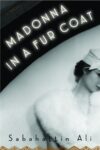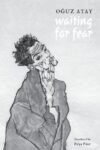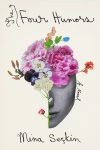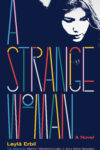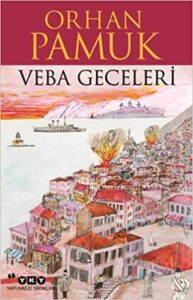
[Yapi Kredi Yayinlari; 2021]
The pattern is set. Every five years or so Mr. Orhan Pamuk, our Nobel laureate, publishes a new novel and we, the devout Turkish readers, bear arms, flagging passages that undermine our delicate sensibilities (linguistic and otherwise), wondering how come he — and not other Turkish novelists that we cherish only after they are dead — is widely read. But we don’t seek closure, because by the time our discontent gives way to reserved submission we are on page a hundred and twelve, ready to set the book aside. We won’t even skim through the rest of it, because buying and not reading Mr. Pamuk is cooler than buying and reading him. So we let the foreign readers worry about him, and eventually go into hibernation for yet another five years. Missing the point is our forte.
That failure to observe, I think, is at the core of Nights of Plague. Ever since Mr. Pamuk published his debut novel, Cevdet Bey and His Sons, in 1982, Turkish readers and critics were in doubt about his merits as a story-teller and about his command of the Turkish language —this, despite the fact that he was regarded as a young novelist with great talent. His second novel, Silent House (1983) could have broken the ice, but that all changed when it was awarded Prix de la Découverte Européenne in 1991. Turkey’s reception of his “discovery” by the French, and eventually by the globe, was both positive and negative. I remember the time when his outstanding novels of 1990’s (The White Castle, The Black Book, The New Life) were published, and how he was both celebrated and thumbed down: we finally had a novelist who wrote difficult novels, who was eligible for translation, daring enough to cross the proverbial bridge between East and West instead of bellyaching about it, and indeed qualified to survive on the outside, . . . which could only mean that he had to be doing something wrong, that he had somehow found a way to play into the hands of that eerie, temperamental Force Field known as the Western World. This attitude sadly proved long-lasting, and was all the more cemented when he was awarded the Nobel Prize in 2006 — because in Turkey it is almost unanimously believed that the criteria for the Prize is one’s political stance, and the places, center stage no less, at the Swedish Academy’s award ceremony is for sale anyway. Cut to the year 2021, and still our intellectuals and the common reader know more or less nothing about his standing as a novelist, and everything about the views of Orhan Pamuk, the man.
Luckily enough, that discontent is lost in translation, and foreign readers enjoy a more unmediated access to his oeuvre. You could claim that his being a novelist outspoken about the history and politics of his own country helps him gain recognition in the global literary world, but the fact remains that his grasp of the gray areas between the dualities of East and West, the modern and the traditional, and of the ambivalence of the Other makes him unique, similar to the way that Cavafy and Mahfouz were unique.
In Nights of Plague, published in Turkey in March 2021 and due out in English next year, the stage for those binary oppositions is the imaginary Ottoman island of Minger, located somewhere between Crete and Rhodes. It is 1901. Abdülhamid II has been on the throne for twenty five years then, and despite drastic territorial losses and the bankruptcy of the empire his autocracy is solid, his paranoia is rampant. When the rumors that a plague hit the island reach him, he deploys a favorite of his, a chemist-cum-pharmacist by the name of Bonkowski Pasha, to the island in an attempt to shed light on the matter. Soon the body of the chemist will be found in an alley — is this a random, albeit tragic, murder, or is it retaliation for the plague, the doing of an islander who believed that it could only have arrived by the ship that brought the chemist?
In the novel Abdülhamid II is a minor character, but his presence is strong. He is known as an aficionado of detective fiction, in particular the adventures of Sherlock Holmes, so when he hears the news of the murder, he urges his officials to approach it like Mr. Holmes would, pointing out to them the fact that the murderer could only be found by gathering evidence and keeping an open mind. Yet there is an apparent incompatibility of Mr. Holmes’ methods of deduction with that of the inductive reasoning predominating the Empire for centuries, represented in the novel by the officials of the island, whose preferred method of finding a culprit is attaching an assumption to meagre evidence. The same incapacity applies to the question of controlling the plague. Given that most of the principal characters, both Muslim and Christian, are associated with the Sultan in one way or another, this is fertile ground for Mr. Pamuk to pit the West against the time-honored pejorative, Bon pour l’Orient.
This is not the first time that the plague appears in his oeuvre. The attentive reader could remember that in The White Castle it loomed over the reflections of the narrator and the master. Yet with Nights of Plague what starts as a romance gradually turns into a reflection of the country’s history, both recent and near past. We have nationalistic discontent that runs amok as the plague progresses. We have conspiracy theories stemming from the islanders’ affinity for isolation, whispering that this plague is an invader. We have fundamentalists and profiteers who won’t bat an eyelash while robbing, raping, extorting or murdering.
As I mentioned earlier, the remnants of detective fiction is there, but now that postmodernism is dead and buried for almost two decades, Mr. Pamuk no longer writes as he did back in 1990’s. This is not necessarily a bad thing, because in this age when TV series like The Tudors, movies like The Shape of Water, and novels like Hilary Mantel’s Cromwell Trilogy opt for what I would call a sincere artificiality, Nights of Plague is proof enough that Mr. Pamuk is ever vigilant, still looking for the new old ways of telling, and telling well. Whatever came after postmodernism — be it metamodernism, performatism, digimodernism, or a cultural logic by any other name — , he is there. His meticulous research prevails, his characters both principal and minor, both real and imaginary, are vivid, his imagining of an island is jaw dropping. But in Nights of Plague these are not postmodernist devices so much as his method of recreating the popular genres of the time that the events of the novel take place. What I have in mind is the so-called “invasion literature,” a literary genre which emerged in the UK during the Belle Époque, and whose birth was, to a large extent, a response to the Franco-Prussian War of 1870. The invasion of France brought out a substantial list of what ifs in England, and The Battle of Dorking, a now-forgotten novella published in 1871 by one G. T. Chesney, eventually turned into a public craze thanks to the popularity of later examples of the genre, more in particular H.G. Wells’ The War of the Worlds and Bram Stoker’s Dracula, both published in 1897. Mr. Pamuk’s plague, while invading the island of Minger by stealth, in like manner instigates an intricate romance of love and revolt, a romance now belonging to a different time and a different world where the romanticism of Jules Verne was still beautifully and wonderfully plausible, where the journey of the hero was as yet untainted by Big Money. Nights of Plague is not an account of a plague in the vein of Daniel Defoe’s A Journal of the Plague Year, nor it is a lament the way that the relevant chapters of Manzoni’s The Betrothed is, but an historical novel by a narrator who confesses right off the bat that she is not a novelist, thus deeming any literary faux-pas fair game from page one.
And talk about life imitating art imitating life. Imagine my surprise when a bunch of readers raised their voices, claiming that in Nights of Plague Mr. Pamuk mocked Mustafa Kemal Atatürk, our beloved founding father of modern Turkey. The proof of it was that one of the principal characters of the novel, one Kolagasi Kamil, shared the same consonants with Kemal in his first name, and his story, as told in the novel, bears a resemblance to the life of Atatürk, because they both chased crows in their childhood, eventually started an uprising, and succeeded in their endeavor. Some felt that Mr. Pamuk’s intention in writing a plague novel was to mock Atatürk. But even though in Nights of Plague Mr. Pamuk is at his most political since Snow, the onslaught is particularly unanticipated because the narrator’s criticism is directed not at Atatürk, but to Abdülhamid II. The narrator pictures the Sultan as a promoter, even the founder, of political Islam, while his pan-Islamist views and his tyranny are discussed in numerous occasions. To top it all, she is fully aware that despite the Sultan’s despotism he is unconditionally loved by the majority, which is more than a subtle allusion both to the line of conduct of Turkey’s recent government and its supporters. So the conservative readers made use of the opportunity to once again declare Mr. Pamuk as an opposer of the government and/or the Ottoman heritage — the possibility that he could be defaming Atatürk (who, by the way, during the 1920s, abolished the Sultanate and the Caliphate, then established modern Turkey as a secular state), eluded us. But self-appointed journalists lost no time to feign confusion and vilify him, Mr. Pamuk’s publisher issued a lame statement calling attention to the fact that this is a work of fiction, and last but not least, Mr. Pamuk hinted that his novel is ripe for a TV series. This is narrative-in-the-making, and while I am sitting in my chair, twiddling my thumbs and wondering, “What’s next?” I feel that the novel’s being declared DOA for the umpteenth time finally left its mark on it and that this is an object lesson on how to stay relevant, how to start a career all over again after settling to a peaceful maturity.
Emre Aganoglu is a novelist, poet and translator, born in 1976 and currently living and working in Istanbul. A published poet, he is also the author of two novels and a collection of essays. His translations include works by Henry James, Flannery O’Connor, and Joseph Brodsky, among others. He is currently working on his third novel and a collection of poems.
This post may contain affiliate links.




